Dynamic Range
Jan 25, 2016 16:12:06 #
Does anyone know the real measurement of dynamic range?
It is how far the photographer gets away from his computer to take photographs.
It is how far the photographer gets away from his computer to take photographs.
Jan 25, 2016 20:02:48 #
I sincerely hope you folks in the east get over the blizzard and back to something useful SOON!
Jan 25, 2016 20:08:59 #
OddJobber wrote:
I sincerely hope you folks in the east get over the blizzard and back to something useful SOON!
No snow here.
Jan 25, 2016 20:28:08 #
OddJobber wrote:
I sincerely hope you folks in the east get over the blizzard and back to something useful SOON!
Good one Lar!
Jan 26, 2016 01:35:25 #
Architect1776 wrote:
Does anyone know the real measurement of dynamic range?
It is how far the photographer gets away from his computer to take photographs.
It is how far the photographer gets away from his computer to take photographs.
As much as I hate to admit it, sometimes Ben Stonegood is useful:
http://www.kenrockwell.com/tech/dynamic-range.htm
Jan 26, 2016 07:20:08 #
Mogul wrote:
As much as I hate to admit it, sometimes Ben Stonegood is useful:
http://www.kenrockwell.com/tech/dynamic-range.htm
http://www.kenrockwell.com/tech/dynamic-range.htm
Why would you hate to admit it? From time to time even idiots have a good idea. If you don't believe me, just pick any random thread on this site.
Jan 26, 2016 07:40:59 #
Mogul wrote:
As much as I hate to admit it, sometimes Ben Stonegood is useful:
http://www.kenrockwell.com/tech/dynamic-range.htm
http://www.kenrockwell.com/tech/dynamic-range.htm
Rockwell is dead wrong, in my experience. That's like saying that an old VW beetle is as good as a Ferrari Testrosa, because both can cruise at 60 mph on a straightaway. Let the road be a bit more challenging, and you will immediately feel the difference.
In my case I moved from a Nikon D300 to a D800E. I also use a Canon 5D III professionally at work. The D300 has a dynamic range of 12 EV. The Canon is even less, at 11.7 EV. The D800 comes in at 14.3 EV. The differences are noteworthy in my photographs.
First, let's get something straight: if the scene you are recording has less dynamic range than your camera sensor, it makes no difference at all. It is when the dynamic range of the scene itself gets high that you can tell the men from the boys.
Rockwell says that a good photographer will adjust his camera to the dynamic range of the scene. That's total BS. You can only make a compromise--if the dynamic range of the scene exceeds that of your sensor, you have to decide what to sacrifice--you can either crush the shadows or blow the highlights. Period.
If all you are doing is taking whatever jpeg the camera spits out, then you aren't really going to appreciate higher dynamic range: it is when you get into a good graphics program like PS that you start to appreciate what a couple of extra EV of dynamic range really give you.
I'm going to post some examples. First is a pic I shot a month ago of a stream in the mountains. To retain highlight detail I had to underexpose the rocks. That's the first pic. Then in PS I lifted the shadows. There was plenty of detail in the shadows, and no noise to speak of. That shot would not have worked with either the D300 or the 5D. The tonal values in the shadows would have been blocked up in the D300, and extremely noisy in the 5D.
Just how noisy are Canon shadows compared to Nikon. That's the next frame. This is a direct comparison between the 5D3 and the D800E. I shot identical frames with the two cameras, underexposed 3 EV, and then raised the exposure 3 stops to get a normal exposure--at both ISO 100 and ISO 800. The dynamic range of this particular photo is quite low, so of course I could have exposed normally, but had there been highlights in this picture, or perhaps a bright sky, the ability to expose for the highlights and then raise the shadow values would be invaluable.
If you notice, the Canon is basically noisier at ISO 100 than the Nikon at ISO 800. The Nikon is extremely clean in the shadows at ISO 100--almost as clean as it is exposed normally. Now if I had exposed both normally, you wouldn't see a difference, but with the Canon I would have had no chance to underexpose to preserve highlights and still had clean shadows to work with.
Finally is a pic of a house abandoned five years ago in Fukushima. Again, I was able to expose to preserve highlights, and still keep good shadow tonality and detail.
So that's why I say Rockwell is an amateur if he says that DR makes no difference.
waterfall as shot
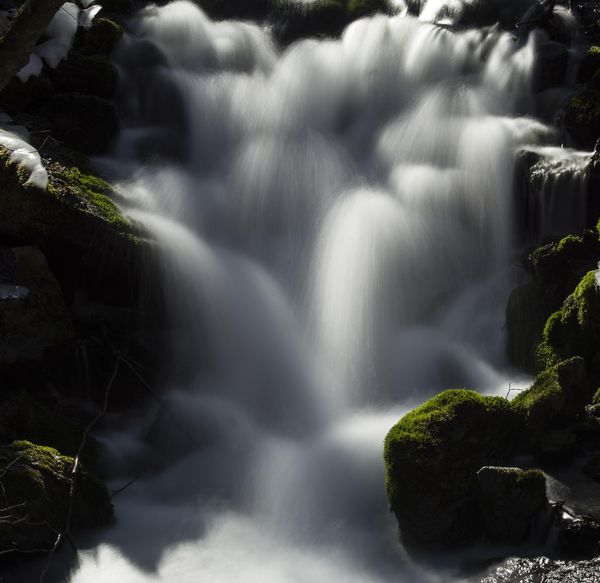
(Download)
waterfall with corrections
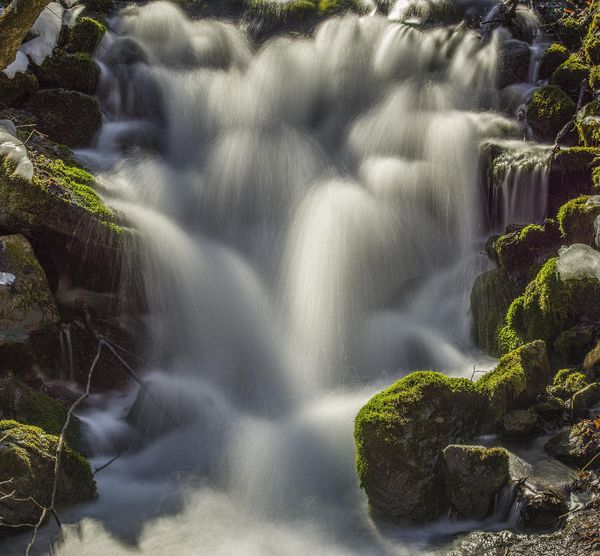
(Download)
DR comparison Nikon vs Canon
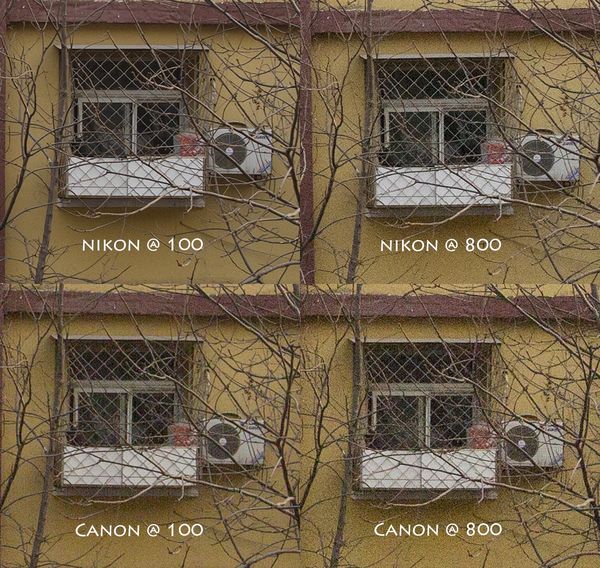
(Download)
abandoned house, Fukushima
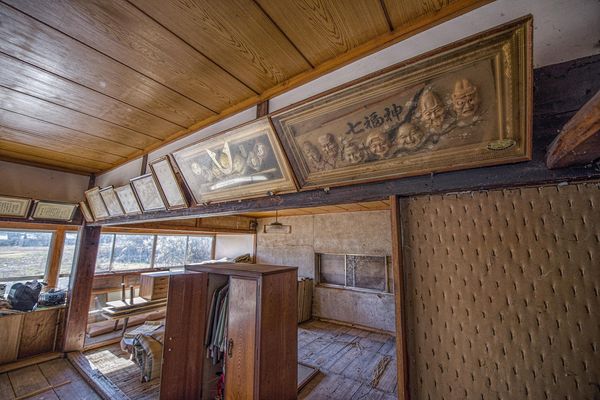
(Download)
Jan 26, 2016 08:53:54 #
Jan 26, 2016 11:18:26 #
Mark7829
Loc: Calfornia
"you have to decide what to sacrifice--you can either crush the shadows or blow the highlights. Period
Not exactly ... you can bracket or you can use neutral gradient filters to compensate. I do evaluate the scene and consider camera and software capabilities and adjust accordingly. When I take the shot, I am not only thinking about composition and light but how I am going to post process all the way to print.
This image was taken last week in Yosemite. Half the valley was in light, the other in shadows with snow in the highlights. I knew before the shot was taken that it was going to be a black and white and I needed to shoot base ISO to reduce noise as I was going to need to bring out details in the shadows. I had the highlights covered with an ND. I also using Nik software for tweaks. BTW - the image is brighter than seen due to image size.
Not exactly ... you can bracket or you can use neutral gradient filters to compensate. I do evaluate the scene and consider camera and software capabilities and adjust accordingly. When I take the shot, I am not only thinking about composition and light but how I am going to post process all the way to print.
This image was taken last week in Yosemite. Half the valley was in light, the other in shadows with snow in the highlights. I knew before the shot was taken that it was going to be a black and white and I needed to shoot base ISO to reduce noise as I was going to need to bring out details in the shadows. I had the highlights covered with an ND. I also using Nik software for tweaks. BTW - the image is brighter than seen due to image size.
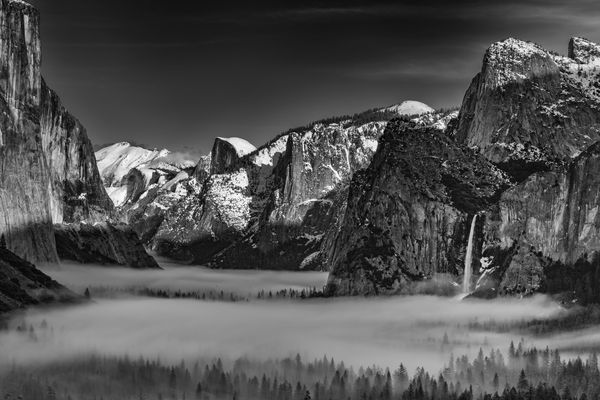
Jan 26, 2016 11:52:18 #
wdross
Loc: Castle Rock, Colorado
Architect1776 wrote:
Does anyone know the real measurement of dynamic range?
It is how far the photographer gets away from his computer to take photographs.
It is how far the photographer gets away from his computer to take photographs.
Sorry, but I have met some photographers that have very little dynamic range no matter how far they get away from their computers.
Jan 26, 2016 11:56:24 #
wdross wrote:
Sorry, but I have met some photographers that have very little dynamic range no matter how far they get away from their computers.
:lol:
Jan 26, 2016 13:46:38 #
kymarto wrote:
Rockwell is dead wrong, in my experience. ....
To be fair to Ken, he wrote that in 2007. We have all learned a lot since then and today's cameras have a lot more dynamic range available from the sensor.
But to use all of the available dynamic range you have to be shooting at base ISO, either 100 or 200. For every doubling of ISO you lose nearly a stop of dynamic range.
Much of the increase in sensor dynamic range has been a consequence of the race to the top (or is it the bottom?) to achieve acceptable images at extremely high ISOs.
Jan 26, 2016 16:51:14 #
Bull-Dozer
Loc: Vermont
I live in Vermont so shoot a lot of snow and ice shots which are always difficult because no one makes a sensor with enough DR to cover. In general I bracket every shot of this type so have something to work with when the distance to my computer becomes small. If its a bright day I can make as many a 5 shots a half stop apart. Generally one of the shots has the best mix of shadows and highlights.
Thinking about the dynamic range of modern sensors I am concerned that as the size of the "quantum wells" (active piece of silicon on the sensor for one pixel) continue to get smaller and smaller. As the wells get smaller and smaller there is literately not enough physical space for the electrons that determine brightness of the pixel, with out "saturating", which will reduce DR going forward as resolutions continue to rise. This is mostly for 35 mm DSLR cameras as medium format camera "backs" still have fat little "quantum wells" that can hold more than enough electrons.
For example a 14EV would require 2 raised to the 14th power electrons or 16,384 to be contained within the quantum well without overfilling it.. 15 EV would require 2 raised to the 15th power or 32,768 electrons.
Thinking about the dynamic range of modern sensors I am concerned that as the size of the "quantum wells" (active piece of silicon on the sensor for one pixel) continue to get smaller and smaller. As the wells get smaller and smaller there is literately not enough physical space for the electrons that determine brightness of the pixel, with out "saturating", which will reduce DR going forward as resolutions continue to rise. This is mostly for 35 mm DSLR cameras as medium format camera "backs" still have fat little "quantum wells" that can hold more than enough electrons.
For example a 14EV would require 2 raised to the 14th power electrons or 16,384 to be contained within the quantum well without overfilling it.. 15 EV would require 2 raised to the 15th power or 32,768 electrons.
Jan 26, 2016 17:02:17 #
[quote=Mark7829]"you have to decide what to sacrifice--you can either crush the shadows or blow the highlights. Period. []
You can also...., gasp..., use the other arrow in the quiver labeled HDR!!
No matter how much DR any camera has, you will eventually run out of DR if you have deep enough shadows and the light source is strong enough.
I could really care less about DR, because my camera can actually do HDR. You can make HDR look as good or as bad as you want. Used properly it's a much more powerful tool than any high DR camera! ;-)
SS
You can also...., gasp..., use the other arrow in the quiver labeled HDR!!
No matter how much DR any camera has, you will eventually run out of DR if you have deep enough shadows and the light source is strong enough.
I could really care less about DR, because my camera can actually do HDR. You can make HDR look as good or as bad as you want. Used properly it's a much more powerful tool than any high DR camera! ;-)
SS
Jan 26, 2016 17:54:21 #
Mark7829
Loc: Calfornia
[quote=SharpShooter]
Bracketing is HDR....
Mark7829 wrote:
"you have to decide what to sacrifice--you ca... (show quote)
Bracketing is HDR....
If you want to reply, then register here. Registration is free and your account is created instantly, so you can post right away.






